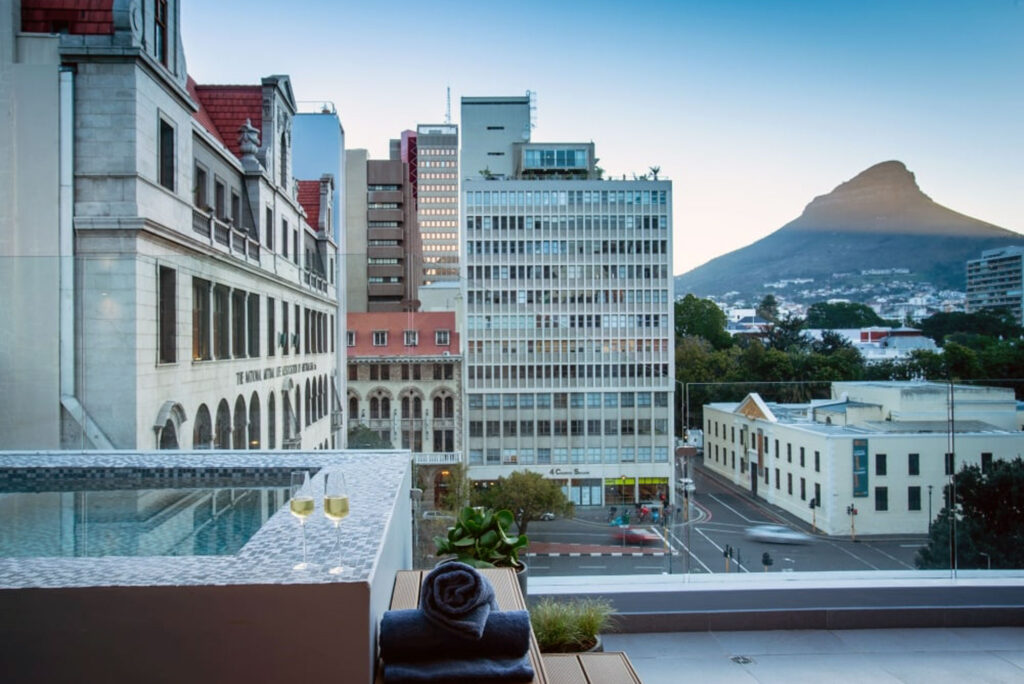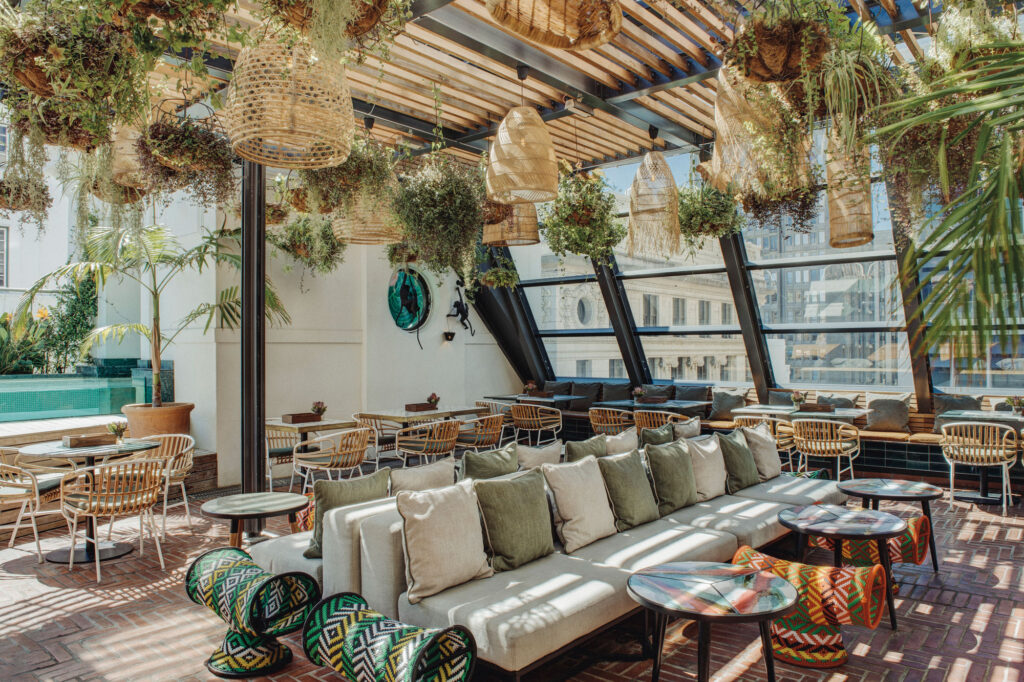
Cape Town, South Africa
A beginner’s guide to Cape Malay cuisine: flavours and history
Southern Africa • Eat & drink • A beginner’s guide to Cape Malay cuisine: flavours and history
A journey through the flavours and history of Cape Malay cuisine
The South African Cape Malay culture has a rich and intricate history, with its roots intertwined with a dynamic narrative that includes both adversity and resilience. Despite its somber past, the Cape Malay culture has emerged as a radiant and colourful addition to South African history. Not only is the Bo-Kaap, home of the Cape Malay, a beloved colourful landmark, but Cape Malay Cuisine has become one of the most loved foods for locals and tourists alike. No visit to Cape Town would be complete without trying a Cape Malay delicacy, such as the sweet and aromatic koeksisters.
Photography courtesy of Unsplash
Table of Contents

What is the history of the Cape Malay?
The story of Cape Malay cuisine is intrinsically tied to the colourful yet intricate history of Cape Town itself, a saga of colonisation, slavery and the convergence of contrasting cultures at the southern tip of Africa. In the 17th century, the Dutch East India Company established a supply station at the Cape of Good Hope to service its ships on the trade routes between Europe and the East Indies. The need for labour led the Dutch to bring people from their colonies, primarily from Indonesia and Malaysia, but also from India, Sri Lanka and various African countries, to work in the Cape.
One of the key figures in this history is Sheikh Yusuf, a nobleman and Muslim scholar from Makassar (in present-day Indonesia), who was exiled to the Cape in 1694 and played a pivotal role in establishing Islam in South Africa. Over the years, the term Malay evolved to include all practising Muslims at the Cape, regardless of their actual ethnic origins.
Despite the hardships of slavery and forced migration, they managed to preserve a strong sense of community and cultural identity, which was vividly reflected in their culinary practices. Cape Malay cuisine evolved from a blend of the culinary traditions these settlers brought with them with those of the indigenous Khoikhoi, the Dutch settlers and later, the British colonists, created a unique culinary style.

What are the key ingredients of Cape Malay cuisine?
Cape Malay cuisine is a beautiful fusion of Malaysian, Indonesian and East African influences, known for bold flavours, aromatic spices and a harmonious blend of sweet and savoury tastes. The essence of Cape Malay cooking lies in its mastery of spices and the skillful use of a variety of ingredients that characterise its rich dishes. Spices such as turmeric, cumin, coriander, cinnamon and cardamom are staples in the Cape Malay pantry.
In addition to spices, ingredients like garlic, ginger and onions form the aromatic base for many Cape Malay dishes. Tamarind paste is another ingredient often used for its sour taste, which lends a necessary acidity to richer dishes, balancing the deep, intense flavours. Tomatoes and apricots, often dried, contribute sweetness and tartness, making it a favourite in the Cape Malay kitchens.
As for preparation and cooking techniques, slow cooking is a hallmark of Cape Malay cuisine, allowing for the infusion of spices into the food, this method adds depth of flavour to the dishes. Techniques such as braising and stewing are common, with dishes often cooked over a low flame for several hours. The slow fusion of flavours under low heat is what gives dishes like tomato bredie their distinctive taste. Marination is another key technique used in Cape Malay cooking, especially for meats, which are often marinated overnight in a mixture of spices and herbs to maximise flavour absorption.

What are traditional Cape Malay dishes?
One of the most iconic Cape Malay dishes is bobotie. This savoury baked dish features spiced minced meat (often beef or lamb) mixed with onions, garlic, dried fruits like raisins or apricots and a blend of aromatic spices such as turmeric, curry powder and cumin. The mixture is topped with a mixture of egg and milk, which forms a golden custard-like layer when baked. Bobotie is traditionally served with yellow rice, which is flavoured with cinnamon sticks and turmeric and accompanied by sambals and chutneys, providing the perfect balance of flavours and textures.
Bredie, a slow-cooked stew, is another beloved Cape Malay dish. Tomato bredie is one of the most popular variations of a traditional bredie. The primary ingredient in tomato bredie is tomatoes, cooked down until rich and thick, combined with lamb that is tender enough to fall off the bone. Spices such as cardamom, cinnamon and cloves are added to build up the flavour, along with a dash of sugar to cut through the acidity of the tomatoes. This dish is often served with rice or roti. It’s a South African staple throughout the year, but the ultimate comfort food on cold rainy days.
And let’s not forget the beloved koeksisters, sweet, syrupy twisted doughnuts. These flavoursome pastries are made by deep-frying plaited dough until golden brown, then immediately soaking them in a spiced sugar syrup infused with ginger, cinnamon and cardamom. The result is a crispy exterior with a sticky, syrupy interior that is irresistibly sweet and flavorful.
No discussion of Cape Malay cuisine would be complete without mentioning Cape Malay curry. This dish varies from family to family, each adding their personal touch to the recipe. Common ingredients include chicken or lamb, potatoes and a variety of vegetables like carrots and peas. What sets Cape Malay curry apart is the blend of spices used, including curry leaves, turmeric, cumin, coriander and fenugreek, which give the curry a deep, aromatic flavour.

Why is the Bo-Kaap significant to Cape Malay culture?
Bo-Kaap, formerly known as the Malay Quarter, is one of Cape Town’s oldest residential areas. Situated on the slopes of Signal Hill, home to the descendants of slaves brought from Malaysia, Indonesia and other parts of Africa in the 17th and 18th centuries. It was here that the first generation of freed slaves settled, over time they formed a close-knit community, maintaining their unique Islamic faith and cultural practices amidst a foreign land.
The area is characterised by its architecture – flat-roofed colourful houses that line the steep cobbled streets, reflecting a blend of Cape Dutch and Georgian architectural styles, showcasing the fusion of the colonial era and the aesthetic influence of the Cape Malay people.
In recent years, Bo-Kaap has become a major tourist attraction, drawing visitors keen to experience its rich history and culture. Festivities such as the colourful Cape Malay Carnival, or Kaapse Klopse, see the streets of Bo-Kaap burst into life with music, dance and traditional outfits. This carnival, held annually, is a significant cultural event for the Cape Malays, showcasing their heritage and passing on traditions to younger generations.
Cooking and culinary arts remain a cornerstone of Cape Malay culture, with family recipes passed down through generations. The Bo-Kaap Cooking Tour, a popular tourist activity, not only teaches visitors how to prepare traditional dishes but also shares the stories behind them, offering a deeper understanding of the community’s history and lifestyle.
The residents of Bo-Kaap continue to uphold their customs and traditions amidst evolving times. Initiatives such as the Bo-Kaap Museum, which documents the life of a typical Malay family, help educate both locals and tourists on the historical and cultural significance of the Cape Malays.

Where to find the best Cape Malay cuisine in Cape Town?
Bo-Kaap
This historic neighbourhood is home to several eateries offering traditional Cape Malay dishes. Here you will not only find the best traditional Cape Malay cuisine, but also meet the friendliest locals that proudly serve up their signature dishes. We recommend you head over to Biesmiellah, a family-run restaurant that is all about authentic Cape Malay flavours and offers nothing but warm hospitality. This eatery is a favourite among locals for its down-to-earth atmosphere and genuine Cape Malay dishes. The menu highlights include traditional samosas, spicy curries and the ever-popular rotis filled with curried mince. Another Cape Malay favourite of ours is Bo-Kaap Kombuis. Here you can enjoy views of Table Mountain while feasting on Cape Malay classics like bobotie and tomato bredie. The restaurant is run by a Cape Malay family who are passionate about sharing their cultural heritage through food. You can taste that each and every meal was prepared with love.V&A Waterfront
For a more upscale dining experience, head over to the V&A waterfront. Here you can enjoy views of the harbour and Table Mountain while indulging in beautifully presented Cape Malay cuisine. We recommend visiting Karibu Restaurant, not only will you have beautiful views of the harbour, but you will also experience exceptional service and food. Their Karoo lamb bredie is a must-try, a traditional lamb stew cooked to perfection. Karibu provides an authentic taste of Cape Malay cuisine in a breathtaking setting.Street Food and Markets
The Cape Town street food scene also offers a variety of Cape Malay flavours. At various markets, like the Oranjezicht City Farm Market, vendors sell homemade Cape Malay treats including samosas, pies and sweets. The V&A Food Market is another spot where food stalls serve Cape Malay dishes, making it easy to try a little bit of everything in one convenient location. Plus you get to chat with the locals – hear the Cape Malay history and stories straight from the Cape Malay people, there is no better authentic experience.Share this
Stay in the know
Sign up for the latest hotspot news from Southern Africa.




















